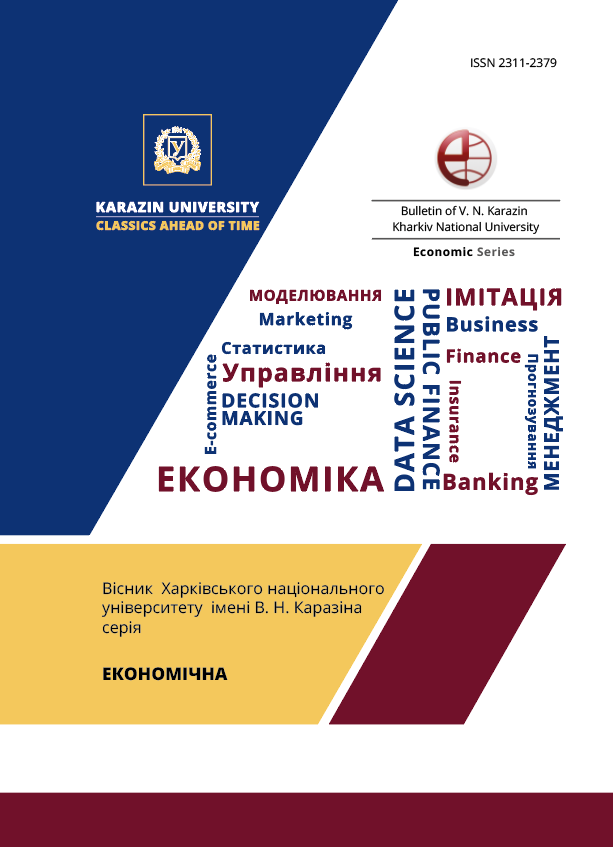Trends in the spread of excessive economic inequality in the modern world and prospects for overcoming it
Abstract
The study is devoted to the problem of excessive economic inequality, which leads to lagging behind developing countries, especially the countries with lower middle and low income, to an increase in the population at the level of extreme poverty, depriving them of the opportunity to receive education, decent work, and income to ensure the quality of life. Based on the Madison Project's database of historical statistics, the authors show that since the 1820s, economic disparity between developed and developing countries has steadily increased. And since the 1960s, this inequality in the level of economic development, measured by the average GDP per capita according to the PPP, began to grow rapidly. The authors put forward assumptions about the negative impact on this trend of international economic and financial institutions, which, through cooperation with developing countries, implement liberal principles in the domestic and foreign policies of these countries. Economic liberalization was carried out by all developed countries to overcome the public financial crisis caused by excessive public spending on economic growth and social protection in the 1970s. Later, international organizations began to transfer this experience to countries with economies in transition and developing countries in the form of stabilization programs, development programs, etc. But the consequence of liberal reforms in these countries was the destruction of their economic systems, institutions, values, culture, and even the memory of the historical path which makes them weaker and more dependent. Analyzing changes in such indicators as the average GDP per capita according to the PPP of the countries of the world, the incomes of various categories of the population, the trade balance index, the index of the economic complexity of the country's exports, the authors prove that the economic inequality between the countries of the Western Branch and Western Europe (according to Maddison's classification) and all other countries at these only increases. Therefore, the implementation of the unified liberal recommendations of international organizations to improve economic mechanisms and state and social institutions in most countries of the world has devastating consequences: loss of competitiveness, technological backwardness, negative trade balance, public debt, inflation, unemployment, and the growth of excessive economic inequality. To overcome it, the countries of the world should apply certain balanced instruments of protectionist policy.
Downloads
References
Kim, O. O. (2019). Historical mission of socio-economic inequality in ensuring dynamic economic balance // Assessment of the level of development of the country's infrastructure in the conditions of an innovative economy: materials of the International Scientific and Practical Conference, March 23, 2019: thesis. Added. Dnipro: NO "Perspektiva", 6-8 (in Ukrainian).
Chancel, L., & Piketty T. (2021). Global income inequality, 1820–2020: the persistence and mutation of extreme inequality, 2-21. Retrieved from https://wid.world/document/longrunpaper/.
Maddison Project Database 2020 – Maddison Historical Statistics. (2020). Retrieved from https://www.rug.nl/ggdc/historicaldevelopment/maddison/releases/maddison-project-database-2020.
Reinert, E. (2007). How rich countries became rich... And why poor countries remain poor. London, 45-387. (in Ukrainian)
Muller, A. (1812). The theory of state budgeting. Vienna.
List, F. (1930). National system of political economy. Nash Format, Kiev, 283-301. (in Ukrainian)
Kulish, O.S. (2014). Income inequality of the population in the market economy: forms, features, trends. Autoref. thesis Ph.D. economy Sciences: 08.00.01 Kharkiv. national University named after V.N. Karazin. Kharkiv. (in Ukrainian)
Kim, A.A. (2013). Institutional aspects of the formation of Ukraine's foreign economic strategy. "Development Economics", 3(67). (in Ukrainian)
Keynes, J. (1936). The General Theory of Employment, Interest, and Money. Retrieved from https://www.files.ethz.ch/isn/125515/ 1366_Keynes/ TheoryofEmployment.pdf.
Schumpeter, J. (1969). The theory of economic development: an inquiry into profits, capital, credit, interest, and the business cycle. Oxford.
Samuelson, P. (1955). Economics: An Introductory Analysis. New York.
Ricardo, D. (1817). On the principles of political economy and taxation. Volume I Works and correspondence of David Ricardo. Cambridge, 133-134. (in Ukrainian)
Dobbin, F. (2013). Forging industrial policy The United States, Britain, and France in the Railway Age, 62-322.
Kim, T.I., & Ilyin G.O. (2019). Impact of globalization on the economy of developing countries. Challenges and ways of promoting the economic development of Ukraine against the background of global trends in 2019. (in Ukrainian)
World Integrated Trade Solution – WITS. (2021). Retrieved from https://wits.worldbank.org/CountryProfile/en/Country/ALL/StartYear/1988/EndYear/2017/Indicator/NY-GDP-PCAP-PP-KD.
Williamson, J. (2018). International Monetary Reform A Specific Set of Proposals. Published September 18, 2018 by Routledge Retrieved from http://fondad.org/uploaded/fragile-finance/Fragile%20Finance-Williamson.pdf.
Harvard Business School Publishing. (2021). Retrieved from https://www.hbs.edu/Pages/default.aspx.

